The Galapagos Islands consist of thirteen large islands, six small ones, and dozens of islets, comprising an archipelago of 17,000 square miles. Located 600 miles off the coast of Ecuador, they are the source of Charles Darwin’s The Origin of Species as well as the inspiration for his Theory of Evolution. When he visited the islands in 1835, Darwin spent 34 days studying the more than 25 fascinating diverse species of animals of the Galapagos Islands.
During the five weeks of his stay, he visited four of the islands — San Cristobal, Foreana, Isabela, and Santiago. He was so enthralled with the diversity of species that he claimed the ecosystem seemed to be a ‘little world within itself.’ He wasn’t wrong.
Within the Galapagos Islands, there are over 2,900 marine animal species alone. Moreover, 25% of these species are endemic to it. Read the article to discover 25 of these fascinating animals that live in the Galapagos Islands.
1. Giant Tortoise
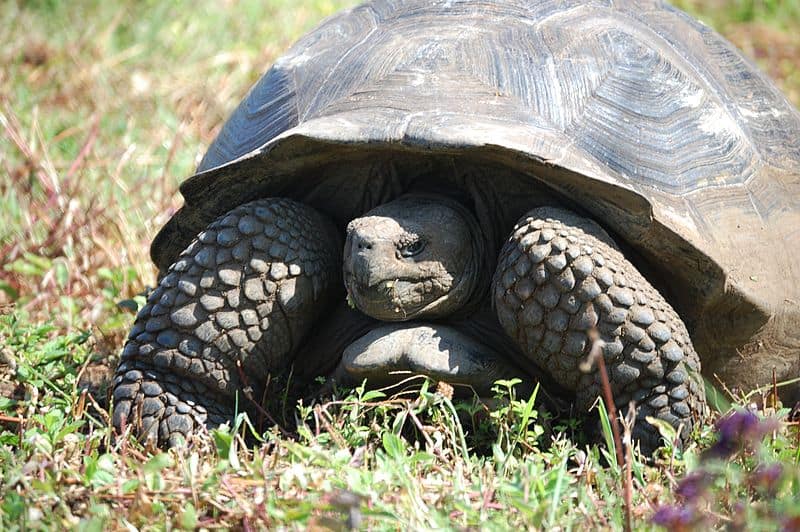
The
giant tortoise
is arguably the Galapagos Islands’ most iconic animal.
©NOAA Photo Library / CC BY 2.0, Flickr - License
Though you might think that these giant tortoises were named after the area from which they come, it’s actually the other way around. The word Galapágo is Spanish for tortoise. Therefore, the Galapagos Islands were actually named for the fascinating giant tortoises endemic to the archipelago. They typically weigh between 250 and 500 pounds, are about 4 to 5 feet wide, and can grow up to 6 feet from head to toe.
2. Galapagos Penguin

These amazing birds are one of the rarest species of penguins in the world.
©Joanne Wastchak/ via Getty Images
Galapagos penguins are the only penguins that live north of the equator. They weigh about 5.5 pounds and are generally about 19 inches tall. Sadly, there are fewer than 2,000 of these fascinating birds left in the world, earning them an endangered status.
3. Galapagos Sea Lion

Galapagos
sea lion
s are found only in one other place besides the Galapagos — Isla de la Plata.
©phalder/iStock via Getty Images
This type of sea lion is extremely large, with males weighing almost 900 pounds at maturity and females weighing about 244 pounds. In addition to their massive size, one of the distinctive features setting them apart from other pinnipeds (fin-footed) is their long, pointy noses.
4. Blue-footed Booby
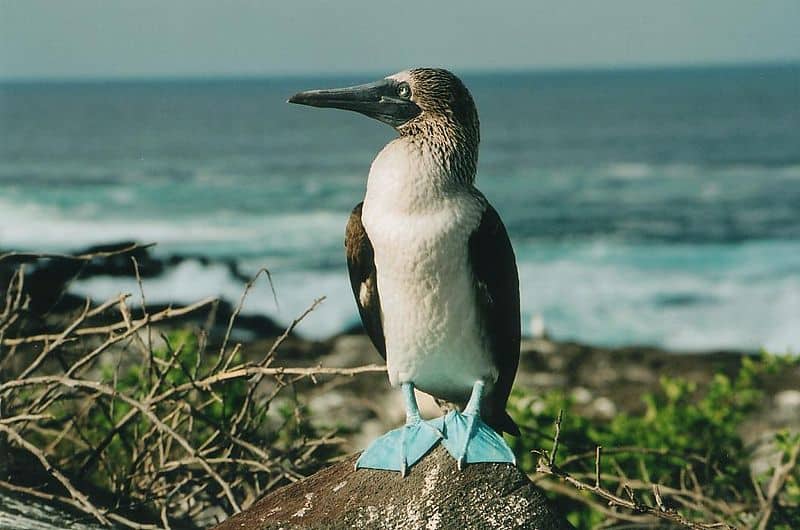
The word booby is derived from the Spanish word (bobo) for foolish.
©Rileypie - Public Domain
This bird is as unique as it is gorgeous. Blue-footed boobies can dive downwards into the ocean at 60 mph to search for food. Their singular blue feet give potential mates information about the bird’s state of health and vitality. However, as amazing and fascinating as these birds are, their population has been declining significantly in the last several years, perhaps due to El Niño’s effects on the collapsing sardine population.
5. Darwin’s Finch
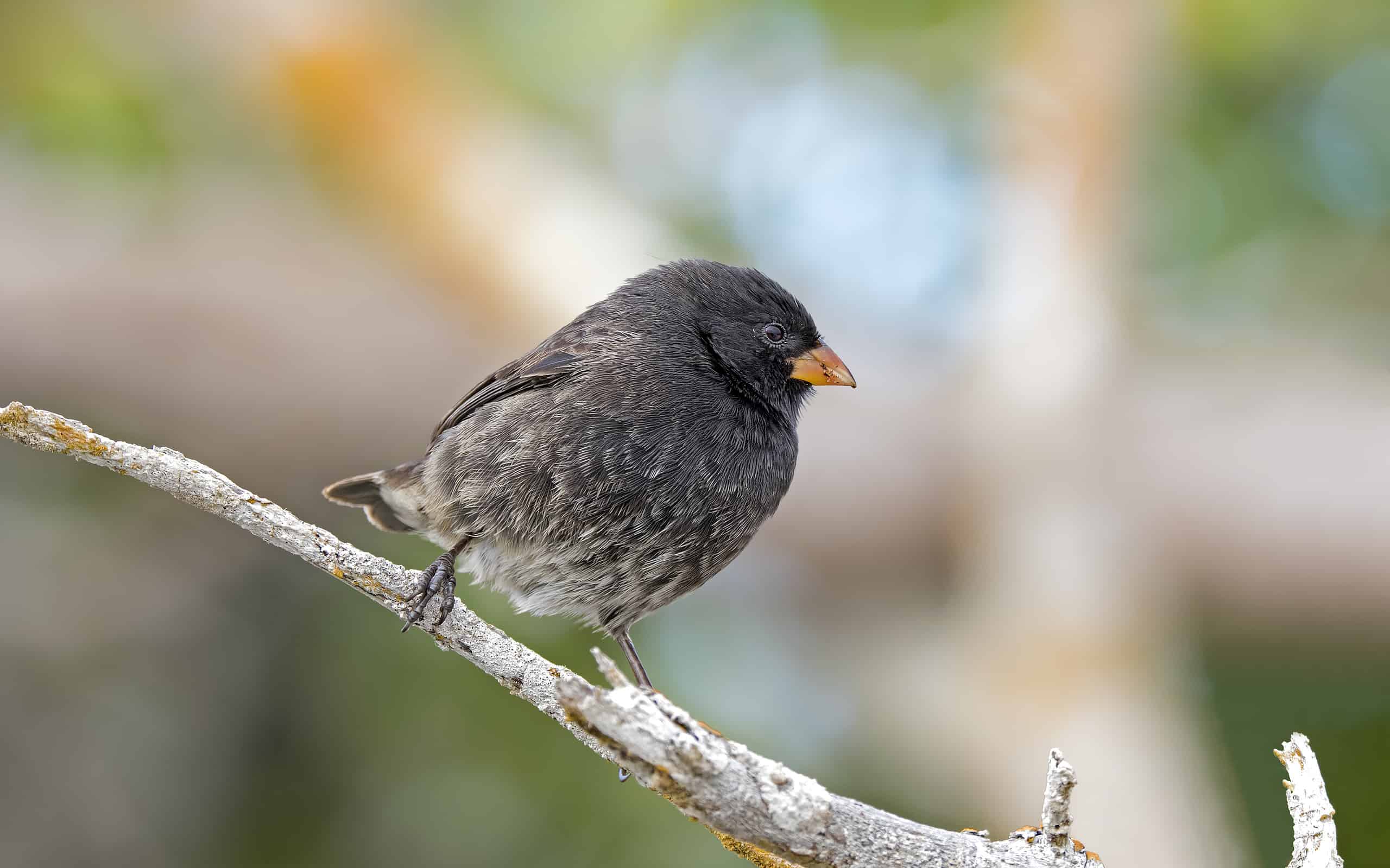
There are actually 17 different species of finches in the Galapagos Islands.
©Franz Schallmeiner/iStock via Getty Images
Scientists believe that all 17 species of these little birds evolved from a common population that came to the Galapagos Islands from the South American mainland over 2 or 3 million years ago. Furthermore, they are considered the fastest-evolving vertebrates due to the way they adapt their feeding behaviors and physical characteristics in time to those of the Galapagos environment.
6. Waved Albatross
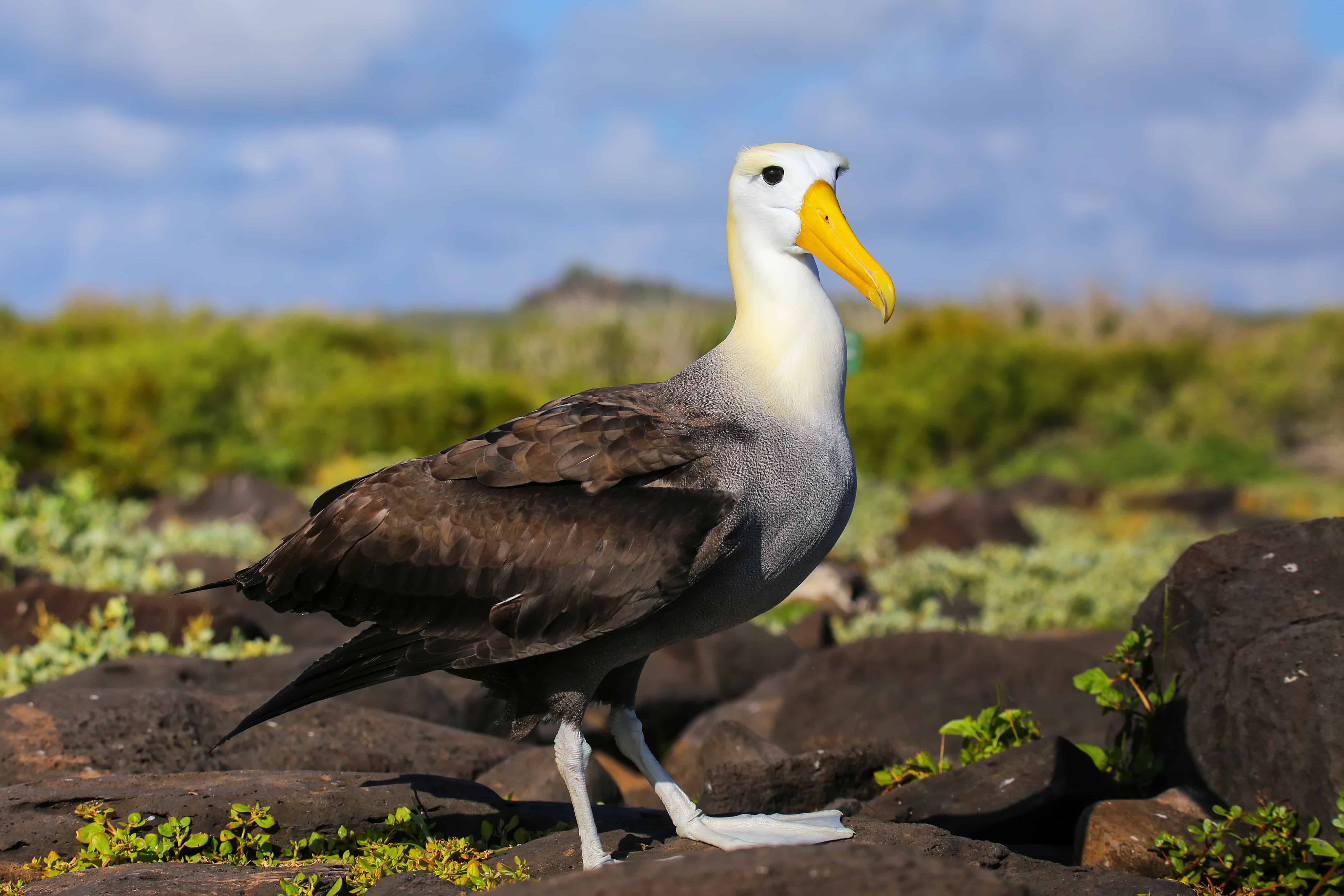
This 3.6-foot bird has the largest wingspan — 7 to 8 feet wide — of any Galapagos bird.
©Don Mammoser/Shutterstock.com
The waved albatross is the Islands’ largest bird with a significant wingspan. Males and females mate for life after engaging in a highly complex courtship dance that includes head nodding, bill clacking, waddling, and even a few cowlike moos. The female generally lays just one egg at a time right on the bare ground.
7. Sei Whale
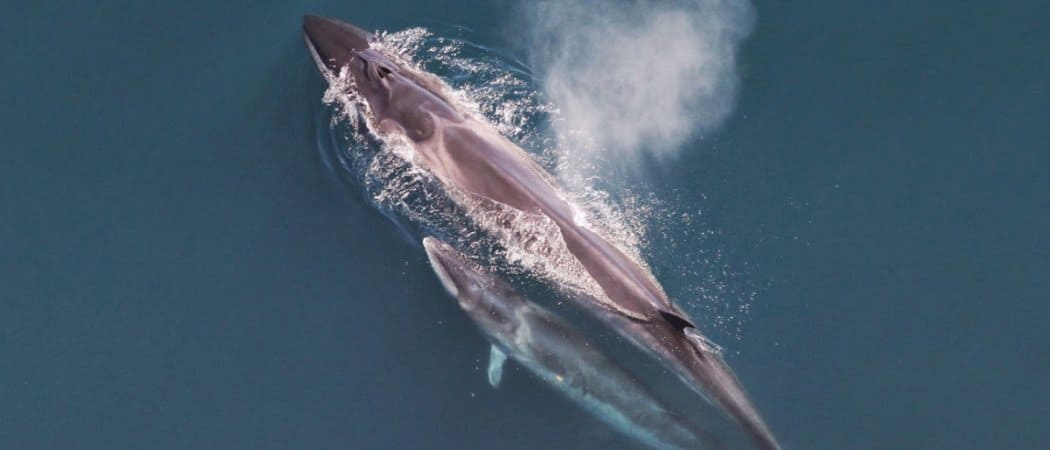
The Galapagos
sei whale
is the third-largest whale species.
©Christin Khan, NOAA / NEFSC, Public domain, via Wikimedia Commons - License
Sei whales are hefty creatures, weighing about 14 tons and reaching up to 46 feet. They have distinctive single ridges on top of their heads with a tall visible blow. Sadly, these majestic creatures are endangered due to fishing line entanglements, climate changes, underwater noise pollution, and deteriorating ocean health.
8. Galapagos Green Turtle

The Galapagos green turtle is the only species of
sea turtle
that breeds and nests in the Galapagos Islands, often living 80 years or more.
©wrangel/iStock via Getty Images
While these amazing marine reptiles generally weigh around 143 pounds, some have even reached almost 300 pounds. They’re usually about 33 inches long, but they can grow to over 4 feet long. Unfortunately, the Galapagos green turtle is now endangered due to being fished for thier shells, meat, and cartilage. They also often become entangled in fishing nets and gear, which causes them to drown.
9. Blacktip Shark
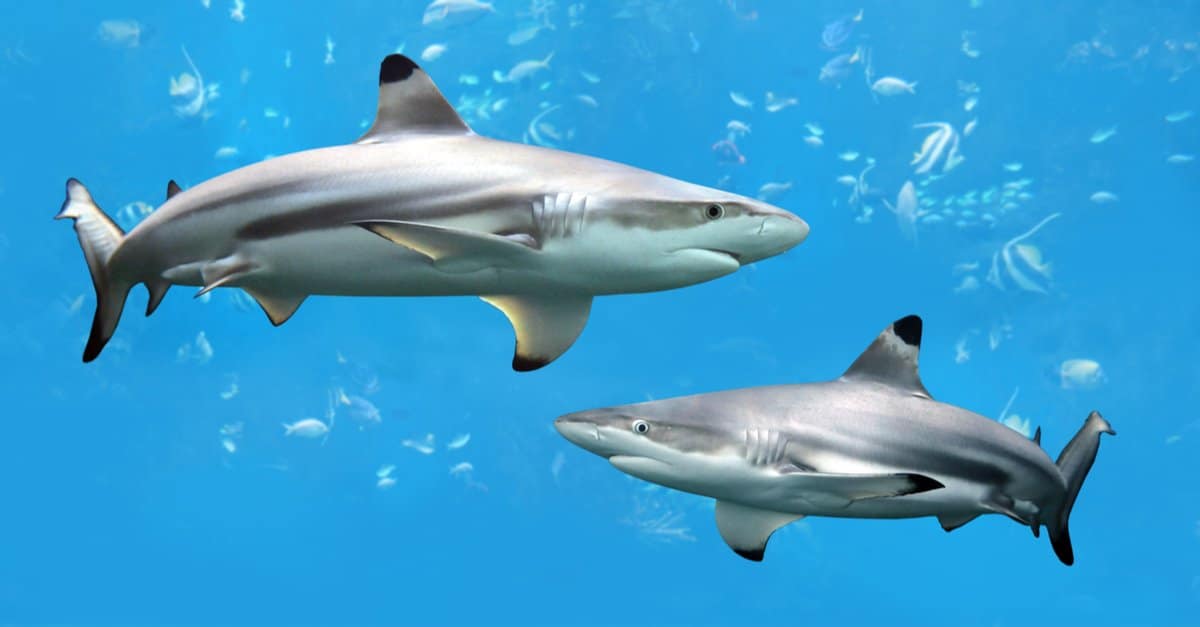
Although some people find sharks terrifying, in reality, these sea animals are a vital part of keeping our oceans healthy.
©Gino Santa Maria/Shutterstock.com
Blacktip sharks typically occupy coral reefs, but they also gravitate to shallow waters. While swimming in shallower water, you can see their distinctive black-tipped dorsal fin surfacing above the water. They hunt around the edges of reefs, but they’re timid and not aggressive toward divers. They can reach up to 6 feet long and live up to 13 years.
10. Brown Noddy Tern

Though it’s not endemic to the Galapagos Islands, the brown noddy tern often nests on the lava rock
©pilesasmiles/iStock via Getty Images
The brown noddy tern is a seabird that breeds on the Galapagos Islands. Surprisingly, they have a 15 to 20-year lifespan, which is impressive for a bird. These interesting characters will nod at their prospective mates as part of their courtship ritual — hence the name noddy terns. Sadly, the brown noddy tern is a near-threatened species.
11. Española Mockingbird
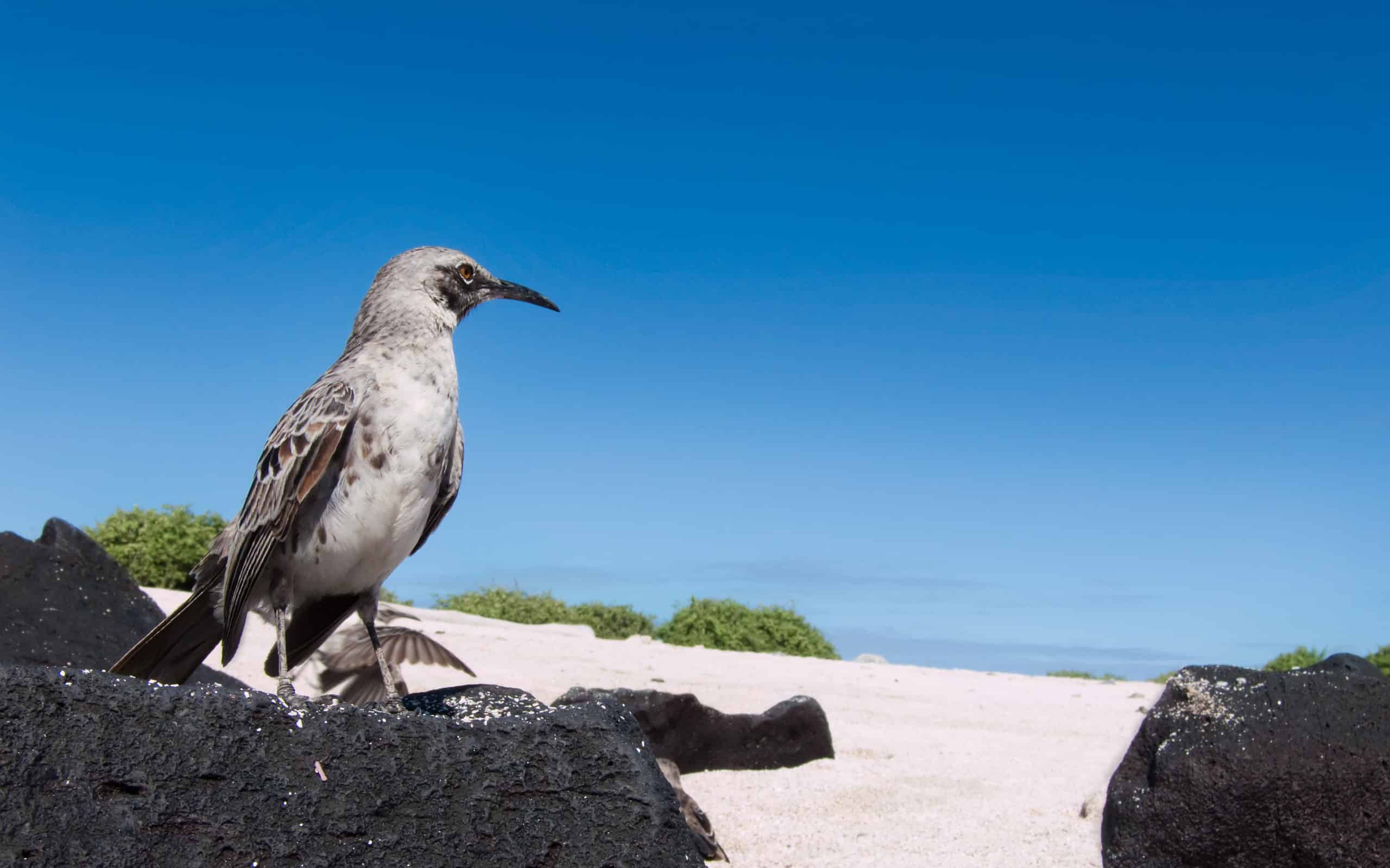
Locals often refer to these mockingbirds as pests, since they’re inquisitive and will approach people out of curiosity.
©BKK2008/iStock via Getty Images
Named for their habitats on Española Island of the Galapagos archipelago, these mockingbirds can mimic other animals’ songs and phrases. Moreover, they’ll mimic these sounds all day. While tourists tend to love their boldness and curious natures, locals — and even scientists working in the Galapagos — often find them to be a nuisance. The birds are always in search of food, and they’ll land on a person’s head while exploring an unknown object.
12. Galapagos Barn Owl
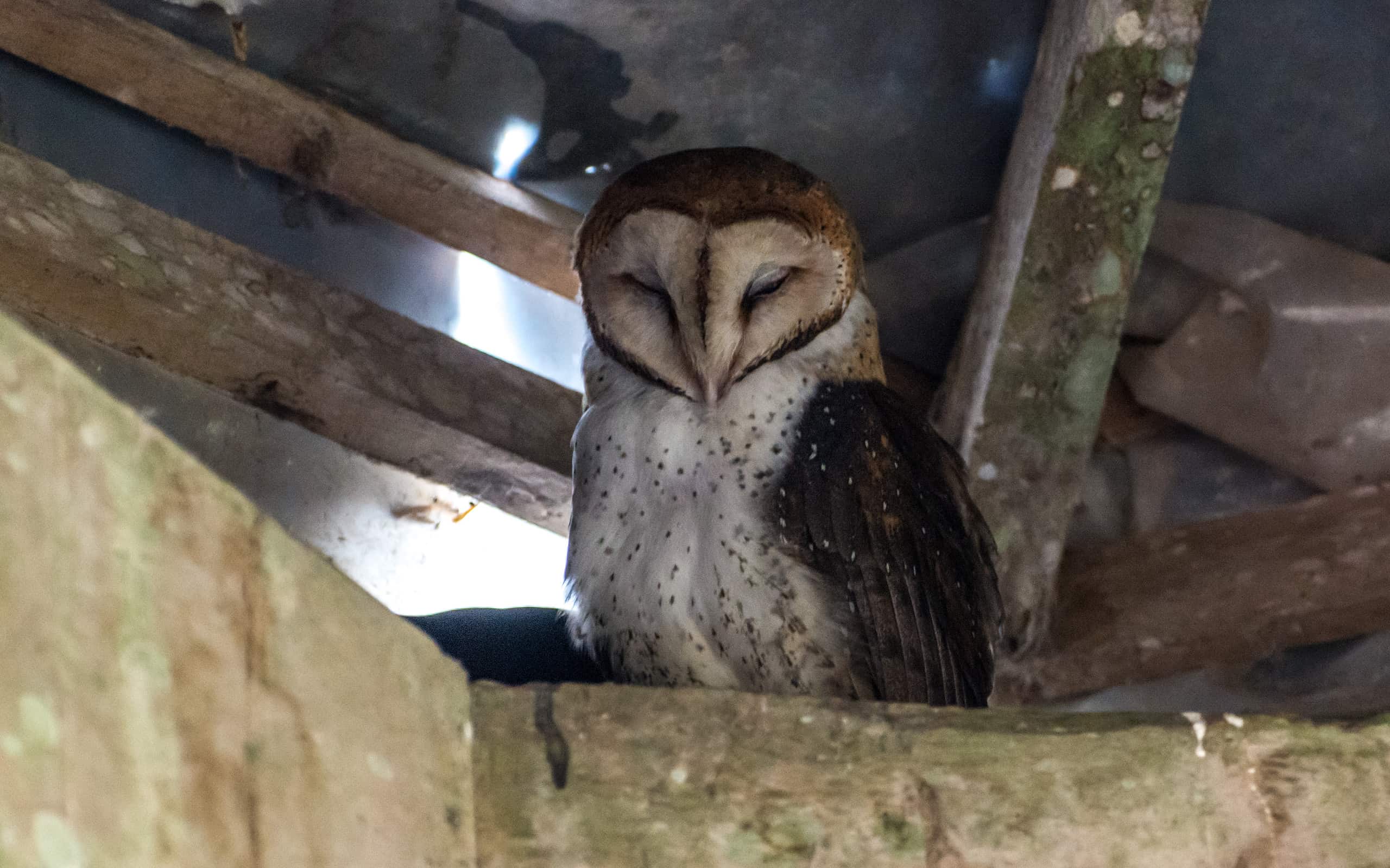
These nocturnal birds live on the Galapagos islands of Isabela, San Cristóbal, Santa Cruz, and Fernandina.
©Kirk Hewlett/iStock via Getty Images
While most owls are classified as Strigidae or ‘True Owls’, Galapagos barn owls are part of the family Tytonidae. The Galapagos race of barn owl is the smallest of the 46 different races. In addition to rodents, these owls prey on reptiles and other birds.
13. Galapagos Fur Seal
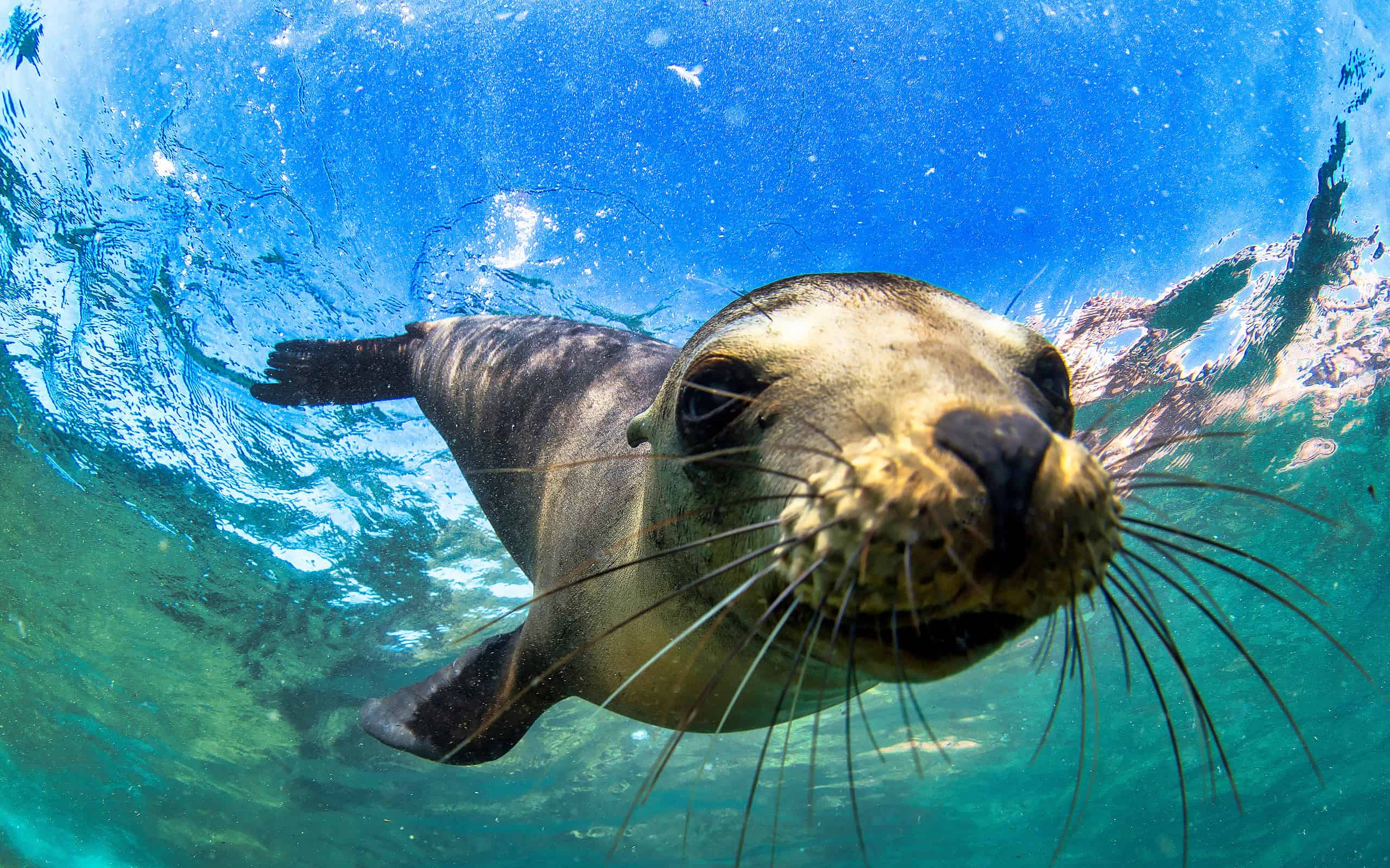
Because of their decreasing population size, the International Union for the Conservation of Nature (IUCN) has classified the Galapagos
fur seal
as an endangered species.
©Aleksandr Golubev/iStock via Getty Images
The Galapagos fur seal has the lowest reproductive rate of any other seal species due to the females bearing one seal pup at a time. While they live on almost all of the archipelago’s islands, you are most likely to see them at James Bay on Santiago or in Darwin Bay.
14. Marine Iguana

The IUCN has listed marine iguanas as vulnerable on their Red List of Endangered Species, with plastic pollution being one of their biggest threats.
©npavlov/Shutterstock.com
One of the most unique characteristics of the marine iguana is that it’s the only marine iguana in the world. Surprisingly, this iguana can dive to depths of over 27 yards while staying underwater for 10 minutes or more. After diving into the ocean, they bask in the sun on top of exposed lava to raise their body temperature, which is around 96° F.
15. Pink Land Iguana
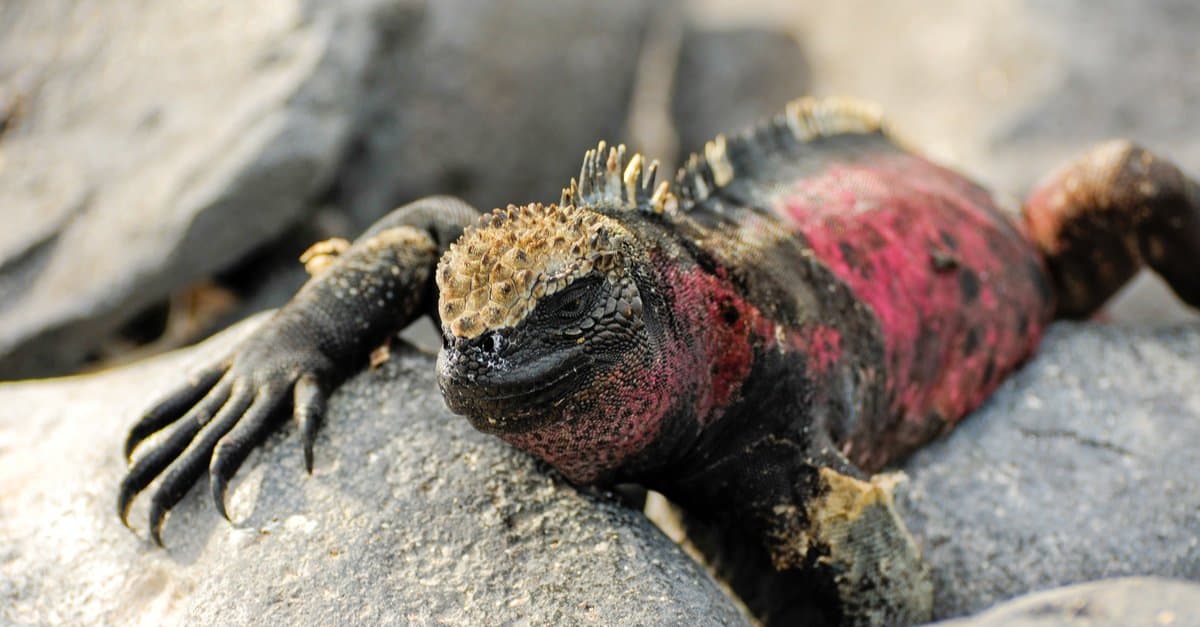
Found only in the Wolf Volcano of the Galapagos Islands’ northern Isabela Island, this species of iguana was discovered in 1986.
©Wirestock Creators/Shutterstock.com
As one of the earliest examples of evolutionary diversification on the Galapagos Islands, the pink land iguana diverged from other land iguana species almost 6 million years ago. These iguanas get their distinct pink coloration from their lack of pigmentation, which makes the blood underneath their skin visible. Although the International Institute for Species Exploration considers these incredible lizards the most significant biological discovery of our century, they are critically endangered — only 211 of them are left.
16. Lava Lizard
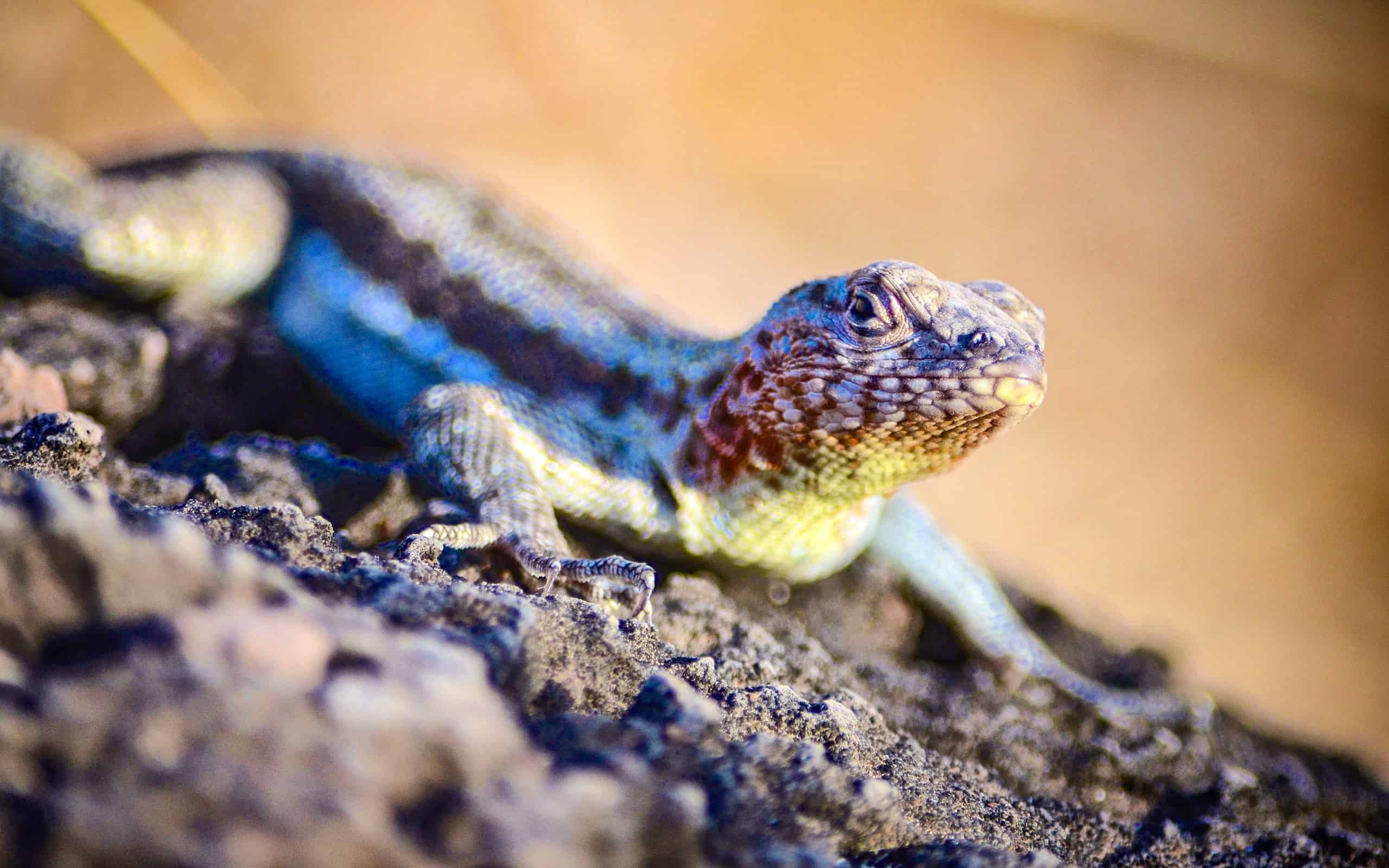
These little lizards are fascinating examples of adaptive radiation, in which their ancestral species diversified into different species as they colonized new habitats in the Galapagos Islands.
©marktucan/iStock via Getty Images
Lava lizards are an integral part of the circle of life within the Galapagos. While they eat insects and control that population, they also contribute to seed dispersal and pollination and serve as food for birds and other predators at the same time. Interestingly, there are seven endemic species of this lizard presently, and they all play essential roles in the Galapagos Islands’ ecosystems.
17. Galapagos Hawk
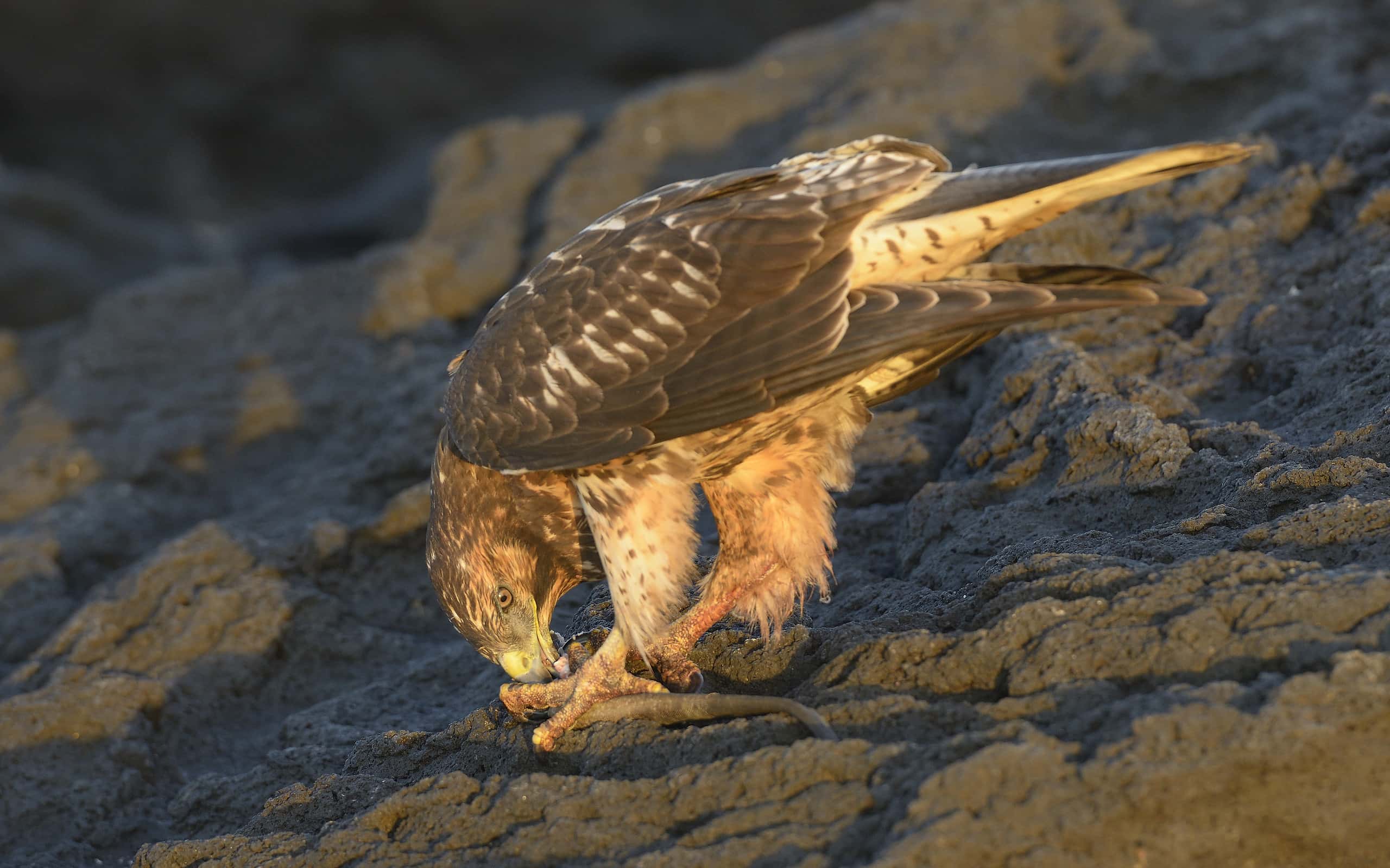
With only 150 breeding pairs left, the Galapagos hawk is one of the world’s rarest species of raptors.
©Wirestock/iStock via Getty Images
One of the Galapagos hawk’s most unique characteristics is its breeding system. The cooperative polyandry system these birds utilize creates explicit monogamy among the males. However, females mate with as many as seven males, who then help to raise the chicks, incubate the eggs, and feed the hatchlings.
18. Flightless Cormorant
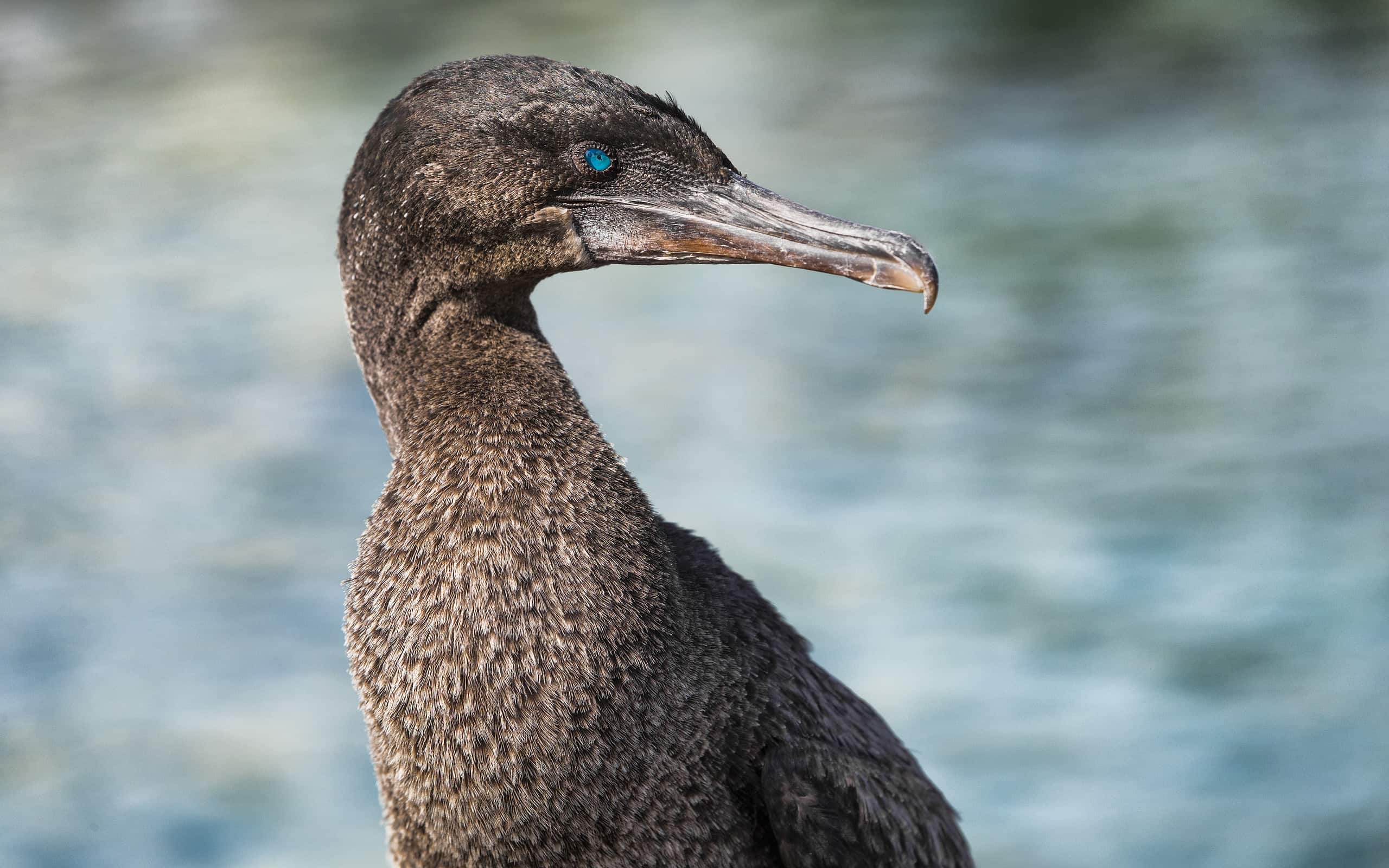
The spectacular turquoise-colored eyes of the flightless cormorant are just one of the features that make this bird so fascinating.
©Maridav/iStock via Getty Images
Although it seems counterintuitive for birds to have flightless wings, through natural selection, these particular birds just didn’t need functional wings. They had very few predators on land and were better at swimming. Those cormorants who were the better swimmers were the ones to successfully pass on their genes.
19. Galapagos Racer Snake
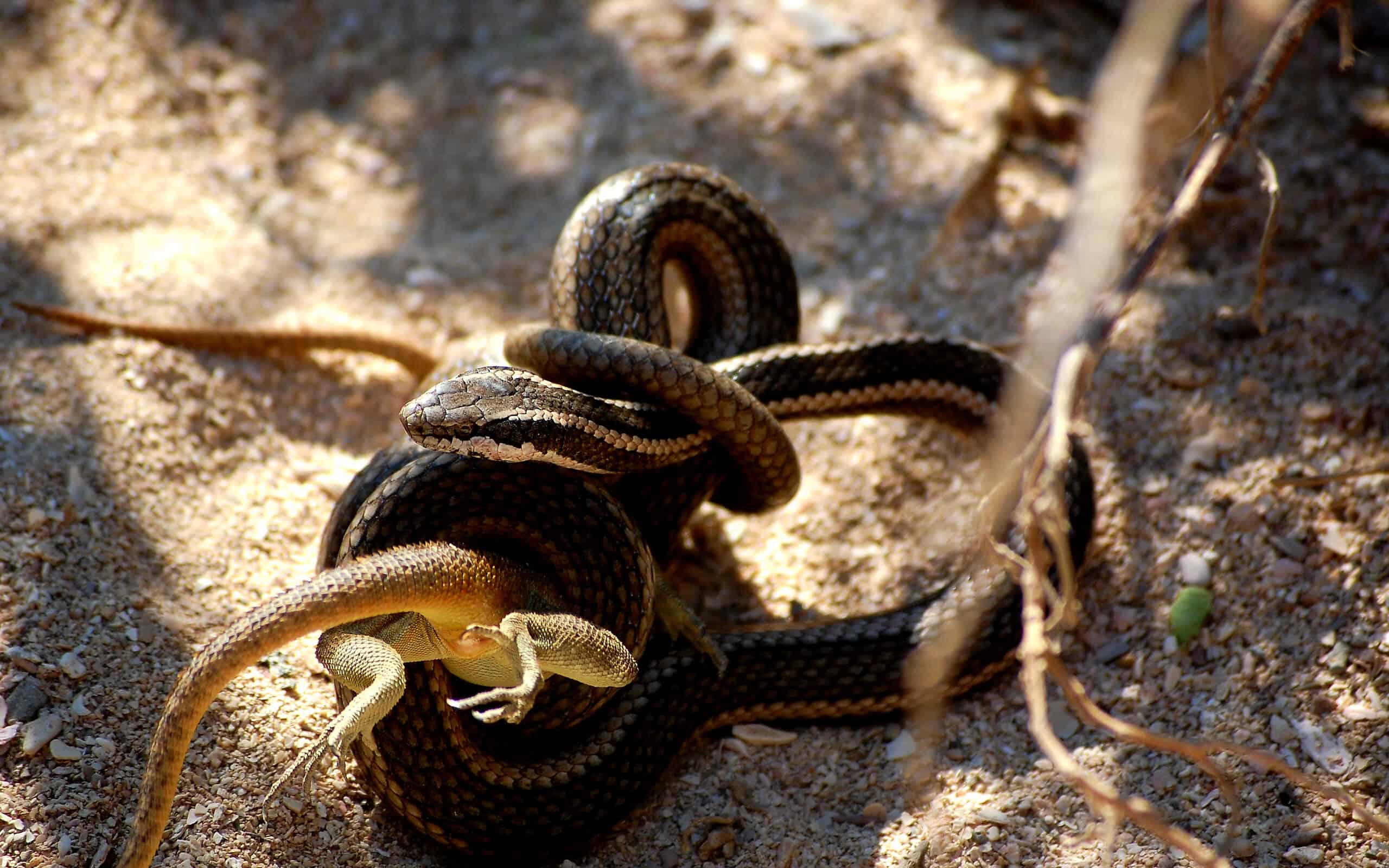
The Galapagos racer snake, though shy of and harmless to humans, is a mildly venomous snake that feeds on lava lizards, iguanas, mice, rats, hatchlings, and geckos.
©Rachel Palmer-Goncalves/iStock via Getty Images
Like many other species of Galapagos Islands animals — especially those found on the island of Floreana — the racer snake population has been nearly wiped out by introduced species like feral goats, pigs, and cats. However, researchers are trying to restore Floreana’s habitat so they can reintroduce these snakes, along with other species. Racer snakes are shy and avoid humans, so you’re very lucky if you get to see one.
20. Great Frigatebird

The great
frigatebird
males are highly recognizable by their black plumage that has a gorgeous green sheen along with their large red throat pouches.
©Jason Corriveau / public domain - License
Great frigatebirds have huge wingspans — 6.7 to 7.5 feet — for their size, which is 2.8 to 3.4 feet. This makes them able to soar over the ocean without having to flap their wings often. Unfortunately, their feathers aren’t waterproof, so they have to fully dry them off in the sun before being able to fly again. These birds have a habit known as kleptoparasitism, in which they harass other birds to make them drop their food, which the frigatebirds will then eat.
21. Lava Heron
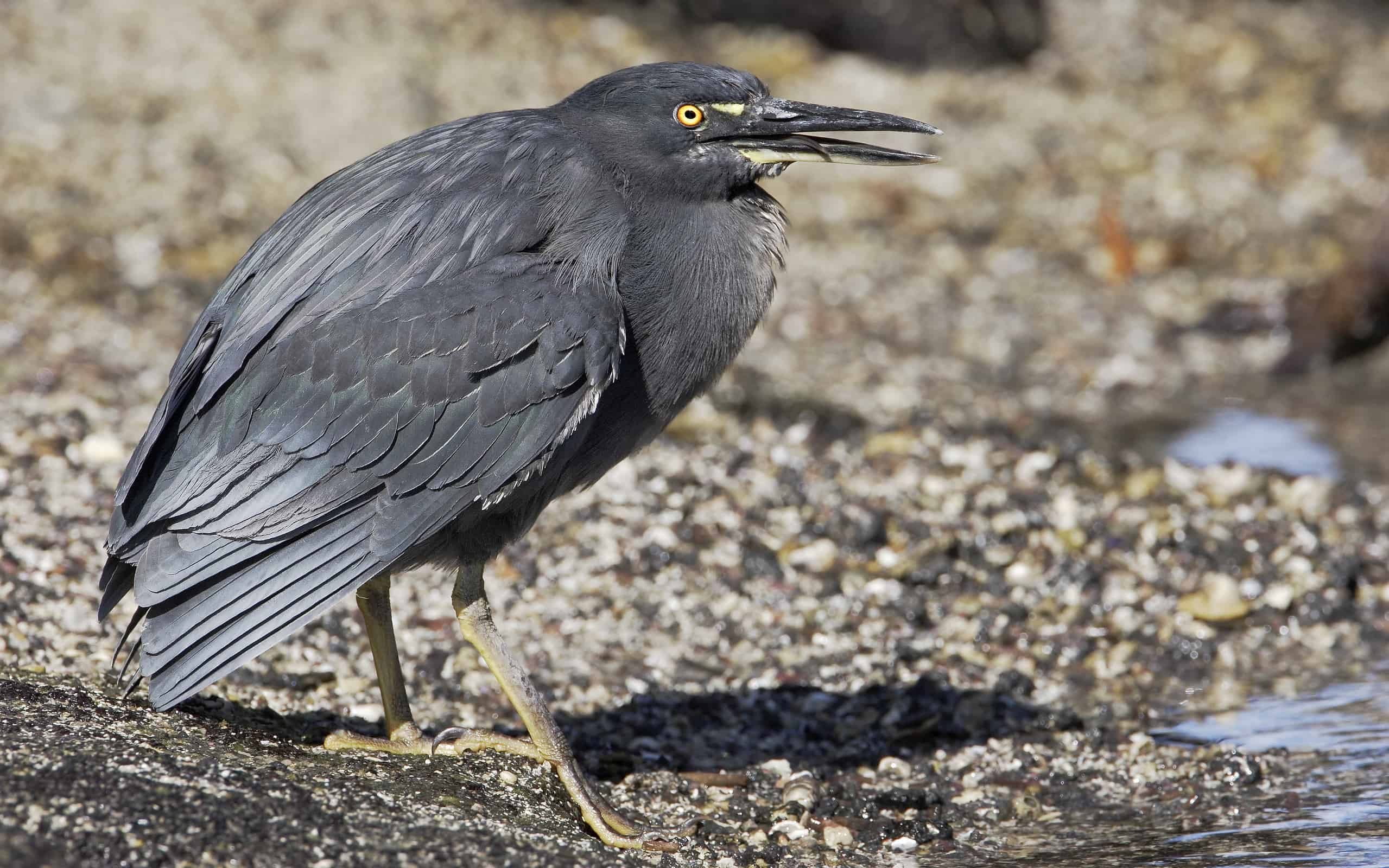
The lava herons’ all-over gray coloring perfectly camouflages them against the gray basalt rocks of their habitats.
©WMarissen/iStock via Getty Images
The lava heron species is a monogamous one. Males and females breed up to three times a year — often after heavy rainfall — and produce one to three eggs at a time. They feed along the shore on small fish and crabs. Their sharp beaks are the perfect adaptation for catching and stabbing their prey.
22. Lava Gull
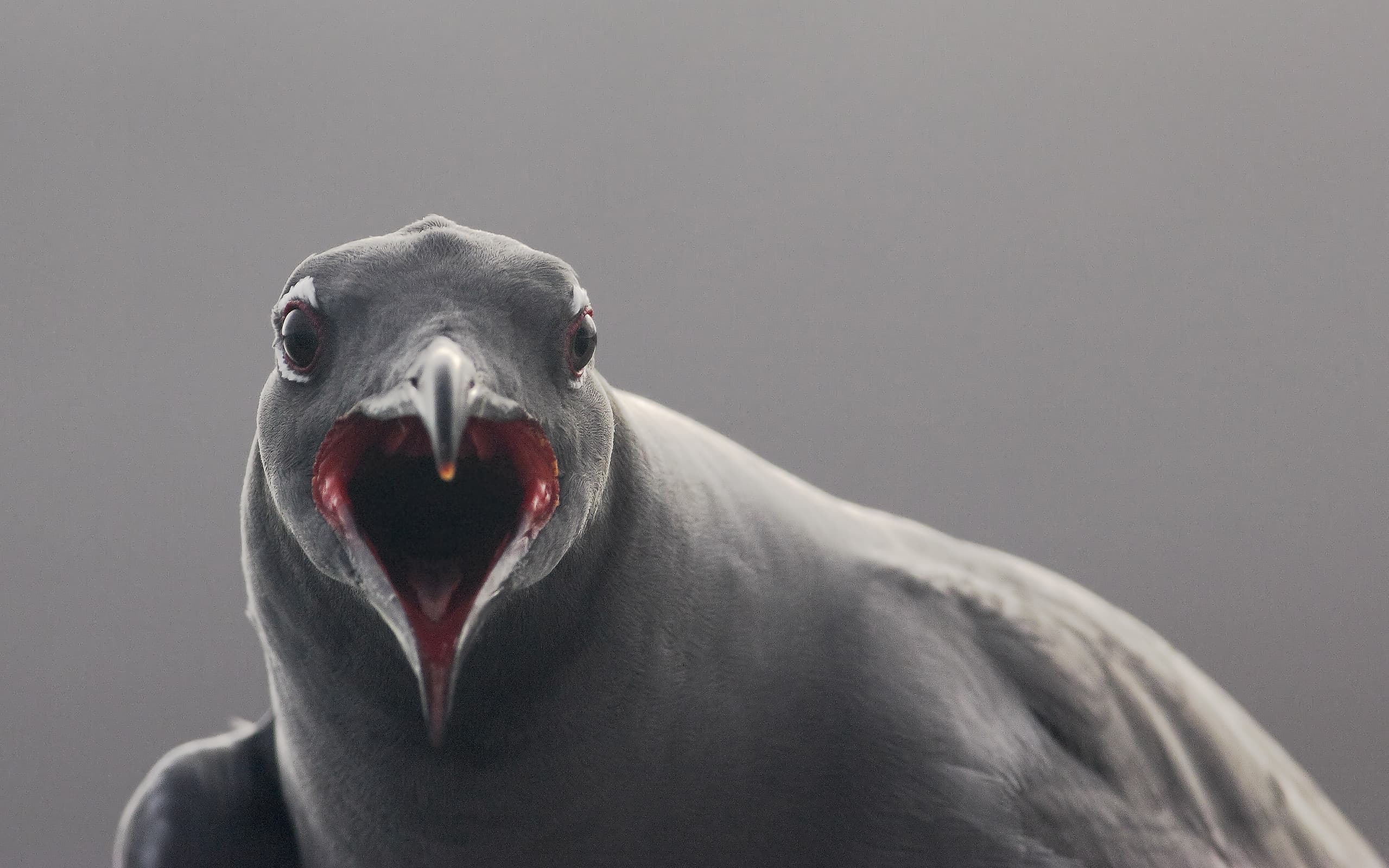
Lava gulls are distinguishable by their white upper and lower eyebrows as well as the scarlet-colored insides of their mouths.
©WMarissen/iStock via Getty Images
Endemic to the Galapagos Islands, you can find these unique birds mainly on the islands of Santa Cruz, Isabela, Genovesa, and San Cristobal. They like to nest far away from other gulls — at least 100 yards — and will defend their territory intemperately. In fact, besides owls, frigatebirds, and introduced mammals, lava gulls are each other’s biggest predators.
23. Galapagos Ghost Crab
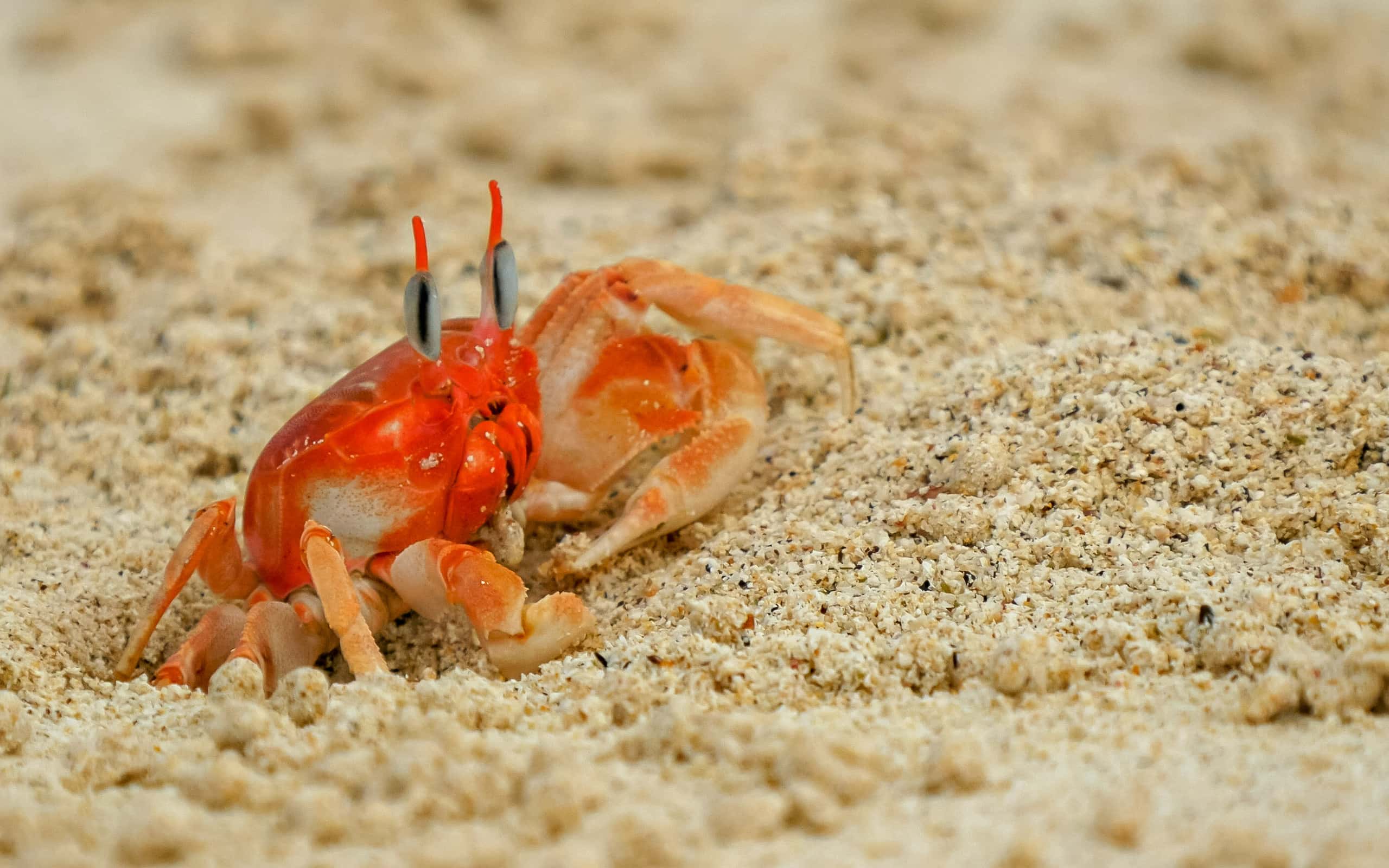
These little crustaceans have boxy bodies and large eyestalks.
©crbellette/iStock via Getty Images
Galapagos ghost crabs are the fastest runners of all crustaceans — able to run over 3.7 yards per second — with slender legs adapted for life on land. Although they spend their lives in intertidal zones, they actually can’t swim. After searching for dead fish, algae, and animal detritus along the beach, they leave telltale little balls of sand all across the beach.
24. Nazca Booby
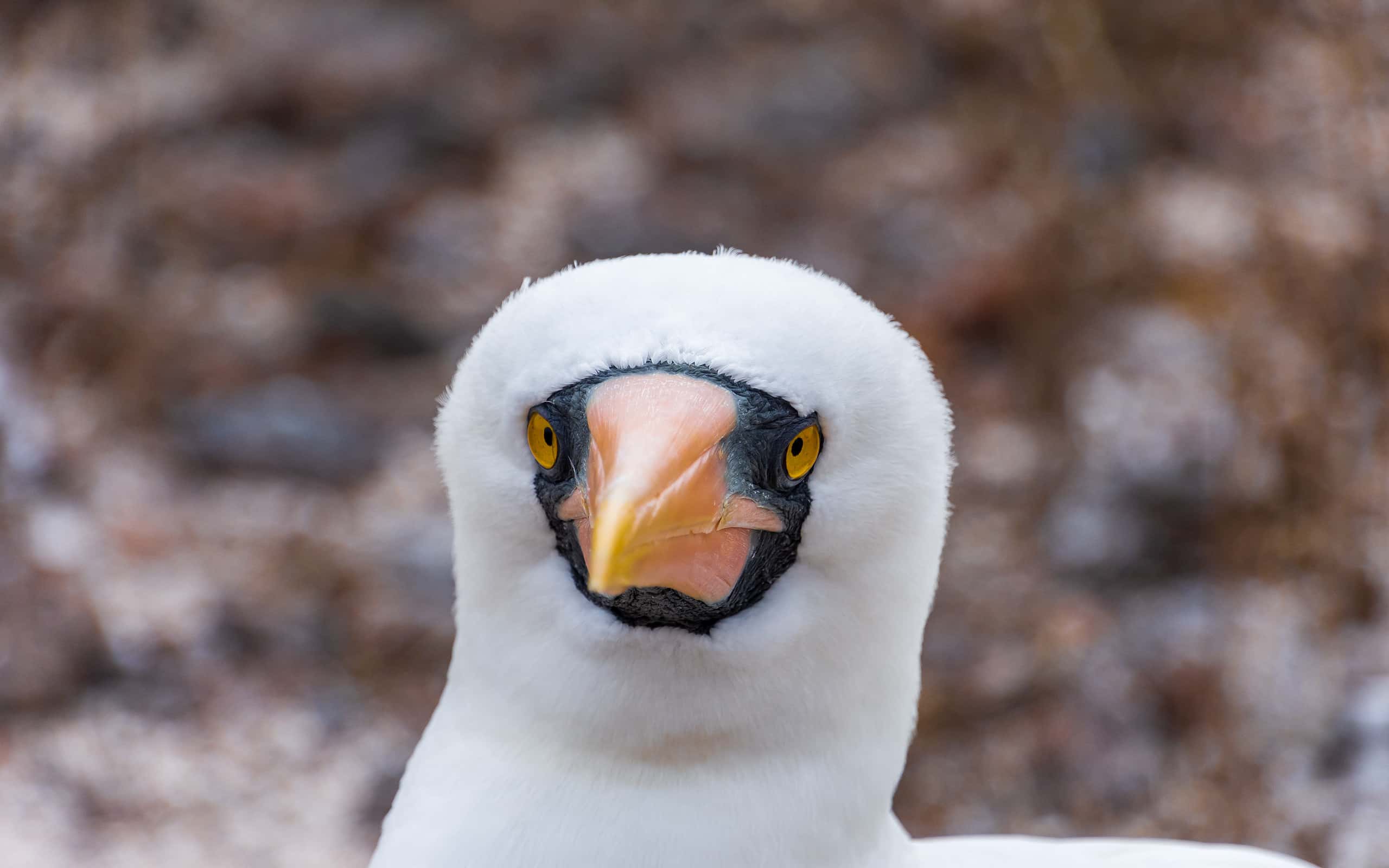
Male Nazca boobies have orange or yellow beaks, while females’ beaks are paler and pinkish.
©Bradley Smith/iStock via Getty Images
Nazca boobies are plunge-divers. They catch their fish by diving into the water from heights of up to 32 yards. They also forage along the shore for sardines, squid, anchovies, and flying fish. An unusual characteristic of the hatchlings — obligate siblicide — involves killing and removing the weaker of two hatchlings from the nest. However, the weaker chick sometimes dies because it’s too weak to take care of itself once the parents leave the nest, while the larger one is self-sufficient.
25. Red-footed Booby
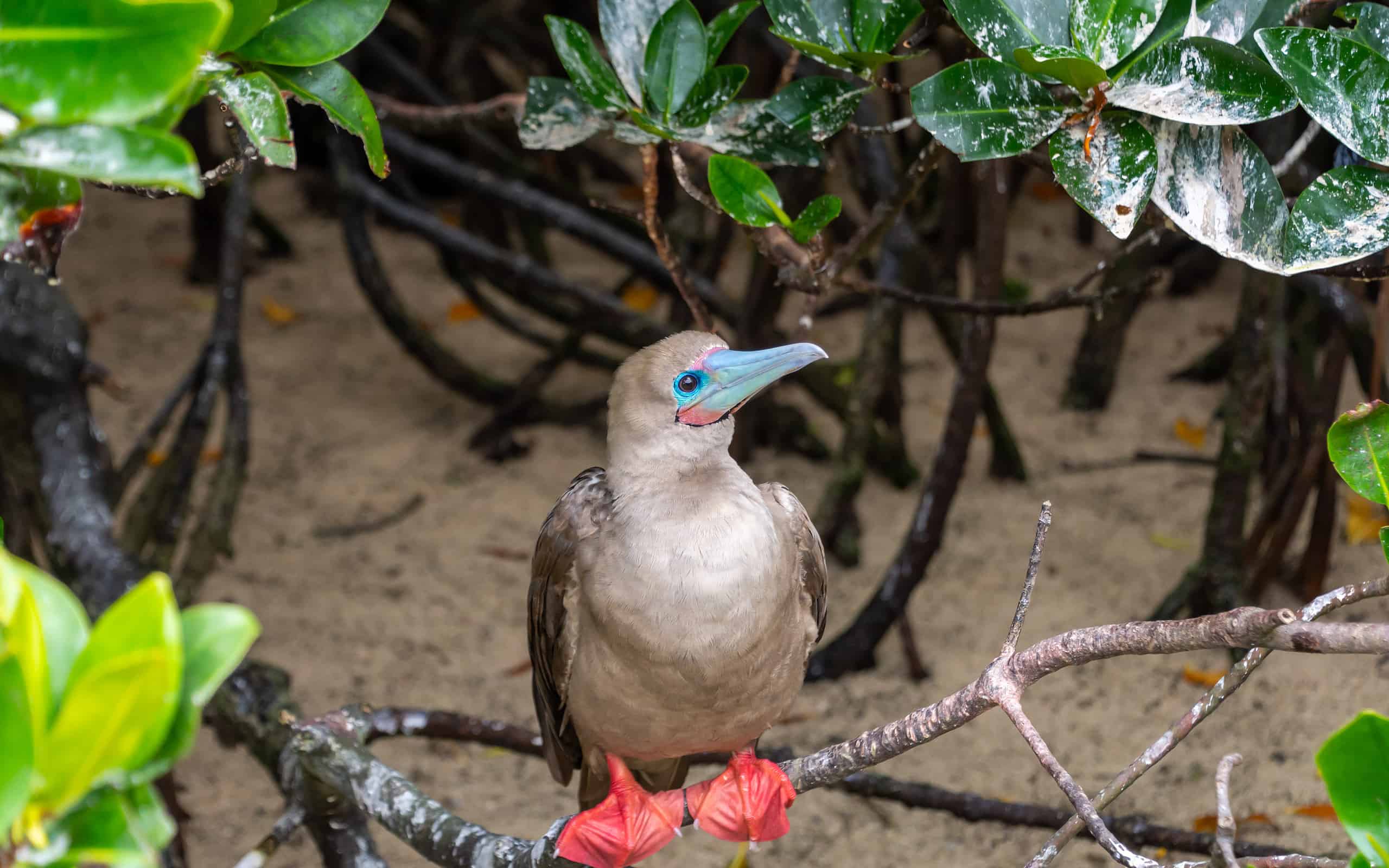
The red-footed booby is the smallest species of booby.
©Bradley Smith/iStock via Getty Images
Red-footed boobies are sociable birds that live in large breeding colonies. This species of booby, after mating, will build nests in small trees or on top of shrubs. Both the males and females take turns incubating their single egg for 45 days. Even though the females only lay a single egg every 15 months or so, these birds live for over 20 years. Therefore, that accounts for many chicks throughout a lifetime.
Summary of the 21 Fascinating Animals of the Galapagos Islands
| Number | Animal | Endemic to Galapagos Islands |
|---|---|---|
| 1. | Giant tortoise | Endemic |
| 2. | Galapagos penguin | Endemic |
| 3. | Galapagos sea lion | Endemic |
| 4. | Blue-footed booby | Not endemic |
| 5. | Darwin’s finch | Only 1 of the 17 species of Darwin’s finches can be found elsewhere — Costa Rica’s Cocos Islan |
| 6. | Waved albatross | Endemic, mostly on Española Island |
| 7. | Sei whale | Not endemic |
| 8. | Galapagos Green turtle | Not endemic, but they nest in the Galapagos Islands |
| 9. | Blacktip shark | Not endemic |
| 10. | Brown noddy tern | Not endemic |
| 11. | Española mockingbird | Endemic |
| 12. | Galapagos barn owl | Endemic |
| 13. | Galapagos fur seal | Endemic |
| 14. | Marine iguana | Endemic |
| 15. | Pink land iguana | Endemic to Wolf Volcano in northern Isabela Island of the Galapagos |
| 16. | Lava lizard | Endemic |
| 17. | Galapagos hawk | Endemic |
| 18. | Flightless cormorant | Endemic |
| 19. | Galapagos racer snake | Endemic |
| 20. | Great frigatebird | Not endemic |
| 21. | Lava heron | Endemic |
| 22. | Lava gull | Endemic |
| 23. | Galapagos ghost crab | Endemic |
| 24. | Nazca booby | Not endemic |
| 25. | Red-footed booby | Not endemic |
The photo featured at the top of this post is © Manuel Cabrera/iStock via Getty Images
Thank you for reading! Have some feedback for us? Contact the AZ Animals editorial team.






